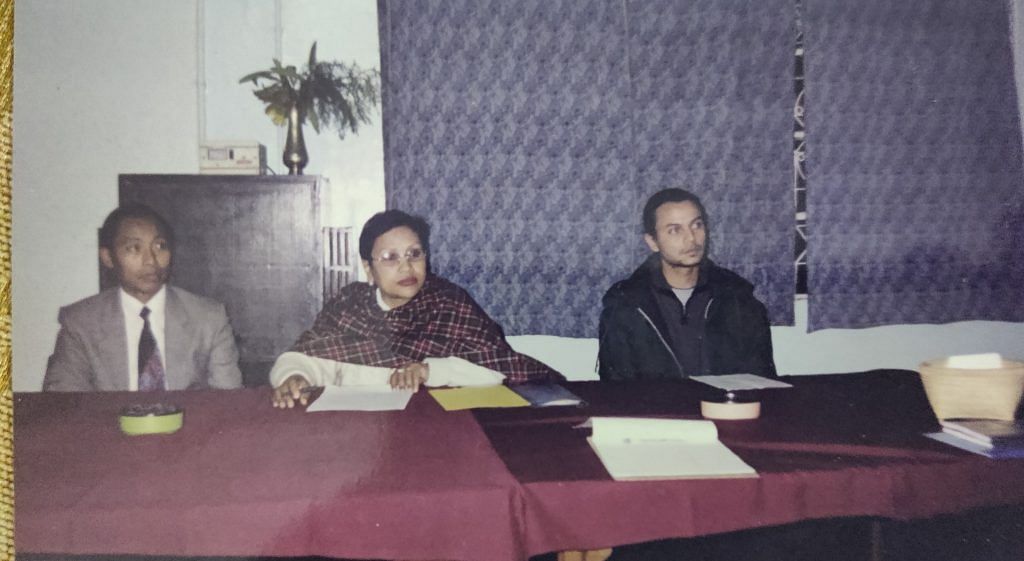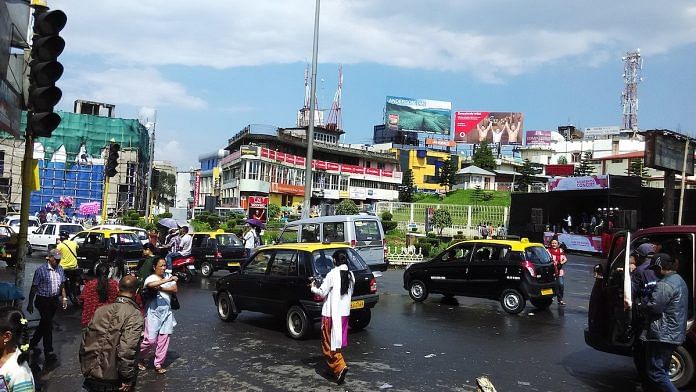It is unfortunate that I had to give a talk to mid-career police officers a few days after National Security Advisor Ajit Doval’s address at the National Police Academy, Hyderabad. For many in the police, Doval is a role model of sorts who had once been the director of India’s premier intelligence agency – the Intelligence Bureau. Doval, the former spook, has inspired many with stories of his escapades in Pakistan as an undercover agent and has become an urban legend of sorts. Doval, while addressing the probationers at the Academy recently, cautioned them to be wary of civil society activists — NGOs, those with Left-liberal views, et al — who he said were likely to be funded by forces inimical to India and therefore throw a spanner in the nation-building exercise. One would have thought that internal security depends a lot on getting citizens to be on the side of the State than alienating them. But it appears that Ajit Doval thinks differently.
With this sort of mindset, it would be fair to assume that the National Security Advisor (NSA) considers only those who overtly support the current government; those who don’t spare a moment to sing praises of Prime Minister Narendra Modi and his second-in-command, Amit Shah; those who use their social media networks to constantly berate critics of the government, as the loyalists of the Indian State. There is a curious ploy here to equate the government to the State.
As one who was part of a motley group of individuals under the banner of ‘Shillong We Care’, we are also perhaps the first group that stood against militancy in Meghalaya since its early days. In fact, we tried to assist the state in countering insurgency from 1996 when militancy raised its ugly head here. Civil society groups have been at the forefront of pushing back militants in Meghalaya.
Also read: Ajit Doval was my batchmate, but his understanding of Constitution, civil society is flawed
‘Shillong We Care’ steps in
In the 1990s, fear was all-pervasive. Extortion became widespread, especially in Shillong where non-tribal traders — mostly in downtown Shillong, the Police Bazar and Bara Bazar area — were asked to shell out money by the lakhs. As is the modus operandi with all militant groups, they informed the victims of the rendezvous where the money would be received. People paid up because those who did not were gunned down in broad daylight. The first one to be shot in the streets of Laitumkhrah was a certain Rajesh Saigal who owned a motor spare parts shop. This demonstrated the militants’ firepower capability. They were taken seriously. Shops downed their shutters as soon as darkness set in. Shillong, once known as a safe place, turned into a ghostly town by 5 pm. It now resembled Kohima, Dimapur and Aizawl, the other state capitals where life ended at dusk.
This was very disconcerting for us at Shillong We Care because we thought that if we didn’t do something then there was every possibility that, like the other militancy affected states, parts of Meghalaya would be declared “disturbed” areas and the Disturbed Areas Act invoked; the military would be brought in followed by invocation of the Armed Forces Special Powers Act (AFSPA).
Another dreadful shoot-out happened at a television store called Aristo at Dhankheti. The store owner, a Bengali gentleman, was perhaps asked to pay but resisted. The salesperson and two other customers were shot; one of them was a tribal boy from Malki. Shillong We Care called a meeting to condemn this heinous act at Malki ground. Hundreds of people turned up for the meeting, which was presided over by H.P. Oflyn Dohling, the headman (Rangbah Shnong) of Malki. Tony Curtis Lyngdoh, then-MLA of the area where the shooting happened, was the first politician to openly castigate the Hynniewtrep National Liberation Council (HNLC) militants who he held singularly responsible for the horrifying deaths at Dhankheti. Indeed these series of killings defied all norms of Khasi society – an otherwise genteel society that believed in human virtues and had a healthy respect for human lives.

Shillong We Care organised street corner meetings in the evenings. Some young people became part of our movement and we trained them for street theatre where they demonstrated the ills of militancy to a silent public too terrified to speak up and express their fears. Some leaders of the local grassroots institutions (Dorbar Shnong) from Laitumkhrah joined us in a procession we took out with placards that said, “Say no to militancy”, “Down with extortion”, “Lets fight back” and “Report extortion.” All of these exercises were meant to encourage citizens to get their voices back because they seemed to have become petrified and unable to speak up.
At the time we also decided to take the police into confidence about our intentions and see if we could work in conjunction with them without actually working for them. We asked then-DGP, Lalngheta Sailo, if he had received any FIRs from any of the business persons who were extorted. Sailo said not one. We asked him if the police took suo-moto action and filed FIRs since the extorted were too intimidated to report. He said the police could not do that as it did not come within the purview of law. We requested the police department to put up hoardings that read, “Say No to Extortion”, “Are you a victim of extortion? Call 100”.
Also read: 13 civilians dead in ‘security forces’ ambush at Nagaland’s Mon dist, CM condemns killings
How militancy was controlled without military
This was the first time that the HNLC sensed that a group of citizens was standing up to them in Meghalaya. As can be expected, those of us in the forefront received late-night calls telling us they knew how many children we had and where they were studying and that we should stop what we were doing. Once, a person who identified himself as a member of the “Seng” (organisation) called me and said the group wanted to meet me. At the time, we only had landlines. I told the person at the other end that if he or his Seng wanted to meet me they should come to my house. “That’s the Khasi way,” I told the voice. He said, “We are watched and coming to your locality is unsafe.” I said, “In that case I am sorry but I cannot come to meet you.” This strange encounter ended there.
Like other militant outfits of the Northeast, the HNLC would call a bandh on Independence Day, 15 August, and Republic Day, 26 January. They said we should not be celebrating these two days because they mark the colonisation of the Khasi states after the British left India. The HNLC did not bother to read history and check what their ancestors had done in 1948. The 25 Khasi chieftains (Syiems) had, in fact, signed the Instrument of Accession (IoA) to the Indian State. True, some of the Syiems were coerced into signing the IoA, but the fact remains that Meghalaya is very much a state of the Indian Union. But flagging issues of real or perceived deprivation was attractive to a populace that faced poor governance and where the rule of law is applied more in the breach.
Shillong We Care members would come out on these two days and walk to Polo Ground, the venue where the R-Day and I-Day functions were observed by the state. The idea was to encourage others also to break the bandh call and the stranglehold that the militants had on the civilian population. In a couple of years, others too picked up courage and held concerts on these days at the Police Bazar, a commercial area that would wear a deserted look since all shops were closed and no one came out to the streets.
All the time we were trying to make citizens aware of the devastating effects of militancy on the economy, education and how it was hindering entrepreneurship.
I was a school teacher then and a single parent to four teenage children. But after school hours, Shillong We Care would meet to chalk out strategies on what to do next. I just felt we had to do it for the sake of our future generation, and Shillong We Care held on to that belief until 2001. That is when we got a no-nonsense Congress home minister who adopted a strategy to stop funds from flowing into the HNLC’s kitty. R.G. Lyngdoh, the home minister, was fortunately backed by then-Chief Minister Dr F.A. Khonglam, and he took the militants head-on using both CI-ops and tactical pressure.
Lyngdoh filed an FIR against all the shop-owners of Police Bazar and other businesspersons who were paying the militants regularly. The shop-owners had to run for cover and seek anticipatory bail. Now they were caught between the devil and the deep sea. They chose to rise above their fears and show the HNLC the FIRs they were landed with and use that as an alibi not to pay the outfit. When the funding dwindled and they felt the heat of decisive police action, the HNLC started sending feelers to the government for peace talks. The home minister said there was nothing to talk about as their demands were amorphous. Moreover, Lyngdoh said that the government would talk to individuals who wanted to surrender, counsel them and provide them assistance to start a new life.
He refused to talk to them as a group saying, in an interview with The Shillong Times, “We had made it clear that if any of the militants wanted to genuinely return to the mainstream, then they had to surrender, with their arms, as individuals and not as a group. Each surrender would then be taken up on its own merit and the law would take its own course according to cases pending against that individual. We refused to talk with the militants as a group or as an organisation. The main reason for this is that we saw that talks with the group would dilute the responsibility and accountability of each individual in the group.” Adding, “The individual members remained anonymous and the group’s identity came to the fore. As a result, even as the group agreed to abide by the law, many of the individuals returned to their illegal activities. This was seen in the case of SULFA then, and later on with the surrendered ANVC and then the surrendered GNLA. The group did not take responsibility for the actions of the individual.”
This was how militancy was contained in Meghalaya without the need for the military to come in and the AFSPA along with it. Above all, it was a militancy that was contained without the baggage of peace talks. Lyngdoh himself accepted that civil society played a big role in enabling the police to tackle militancy in Meghalaya. Now the HNLC is reduced to about 20 cadres, mostly undercover along the Bangladesh border.
Also read: What does a CM’s day in his constituency look like? Following Meghalaya’s Conrad Sangma to Tura
Idea of Indians
Ajit Doval would do well to understand the dynamics in the hinterlands of India and not just the heartland and accordingly tailor his doctrine after taking into account the huge diversities of the country, a sub-continent that defies the idea of a nation. To consider large swathes of citizens of this country and those involved in activism as the “new frontier of war” and to equate the war against civil society as fourth-generation warfare is fraught with ambiguities that seem to serve a short-term political agenda. Not done, Mr Doval! The idea of India is much larger than your imperfect vision of it.
The author is a journalist and editor of The Shillong Times. Views are personal.
(Edited by Neera Majumdar)



